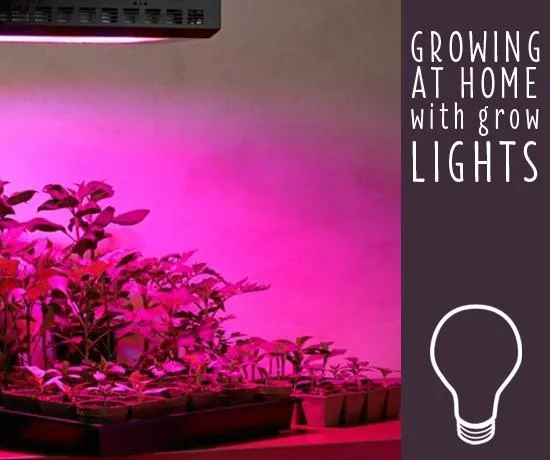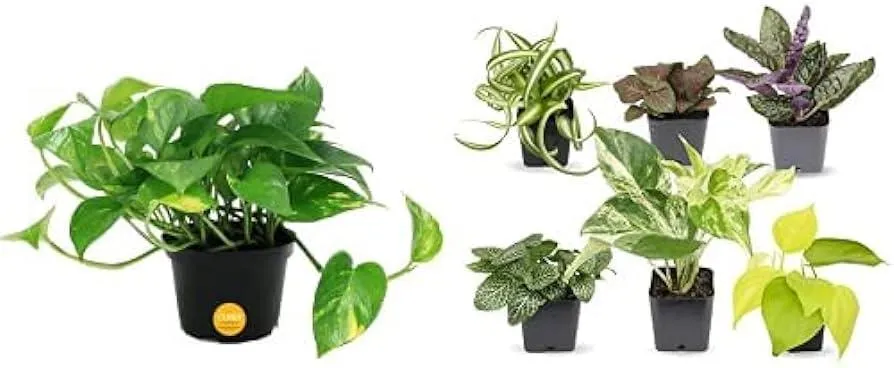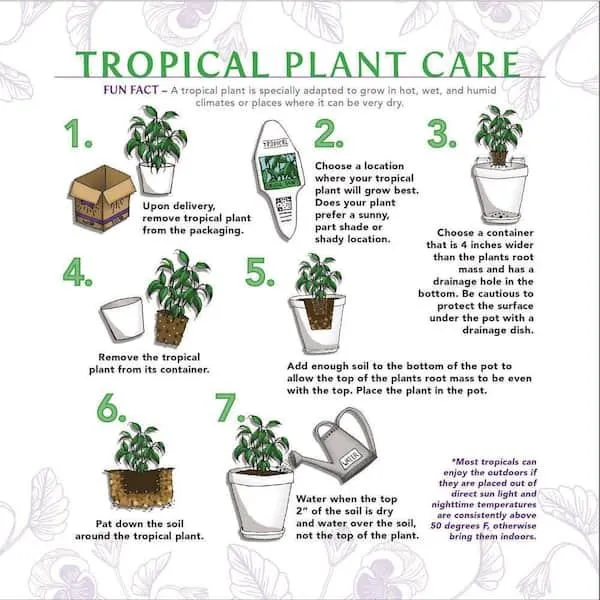All You Need to Know About Interior Hanging Plants
If you’re searching for “interior hanging plants” like I was not too long ago, chances are you’re looking to spruce up your home decor with some green friends. From my experience living with plants indoors, they can seriously lift your mood and vibe. But with so many options out there, it can feel kinda overwhelming figuring out what works best. In this article, I’ll walk through all the need-to-know basics on caring for hanging plants indoors – like what kinds to choose, where to put ’em, how to water properly, and more. By the end, you’ll have everything on lockdown to start your own little hanging garden.
Picking the Right Plants
When it comes to selecting hanging plants for inside, you’ll want varieties known to thrive in low-light conditions. Some of the best, low-maintenance choices include:
- Pothos – Basically the king of indoor plants. Very hardy and forgiving to under-watering. Comes in lots of curly, heart shaped leaf varieties too.
- Philodendron – Sort of look like little indoor trees. There are tons of kinds but my fave is the neon pothos-esque philodendron. So pretty!
- Snake Plant – Super dramatic long leaves. These guys can go weeks without water!
- Spider Plant – Makes cute little plantlets on long tendrils. Fun to watch them grow.
- English Ivy – Makes a nice hanging vine and thrives in lower light. Just don’t let it climb somewhere it doesn’t belong!
As a general rule, avoid plants with big broad leaves like peace lilies or ferns. Their leaves tend to yellow or brown without lots of bright light. Stick with the types above and their smaller foliage for best results indoors. You can always try a grow light too if you really want to branch out plant-wise.
Picking the Right Spot
When figuring out where to position your new hanging pals, think sunlight. Even low-light plants still need some sun, so aim for an east-, west-, or south-facing window. At minimum, 6 hours of indirect sunlight daily is good. I’ve faced situations where placing a plant in a dark corner caused it to go downhill fast.
You’ll also want to make sure your hangers or poles can support the weight once soil is saturated from watering. Over time, that extra moisture adds up! Some kind of wall or ceiling attachment is best. Kind of basic, but have definitely had sad plant accidents from janky DIY hangers busting loose.

Watering Wisdom
Proper watering is key to keeping your hanging plants happy indoors. The soil shouldn’t be allowed to fully dry out, but you also don’t want to keep it soggy. Here’s a simple watering routine I follow:
- Check the top 1-2 inches of soil. If it’s dry, it’s time to water.
- Water thoroughly until water drains freely out the bottom of the pot.
- Empty out any water collected in the saucer to prevent root rot.
- Don’t water again until the top soil is dry.
During winter when they aren’t growing as fast, you can space waterings out a bit more. When it’s warmer, they may need a drink every 5-7 days. Another trick is sticking your finger in the soil – if it feels moist, hold off watering for now. Makes it basically foolproof, ya know?
Fertilizer Facts
Most hanging plants do well with an occasional feeding to boost growth. In the spring and summer, use a diluted liquid plant food every few weeks according to instructions. During fall and winter when they’re less active, skip fertilizer. I like to use a all-purpose formula like Miracle-Gro so I only have to keep one type on hand – makes life way simpler, fam.
Don’t overdo it with plant chow though. That can also lead to problems like burned roots or leaves. Less is more, as they say. A light feeding does the trick to keep plants looking lush and tasty. You don’t wanna wind up with a sick plant on your hands!
Proper Pruning Practices
Pruning is vital for keeping some hanging plants like pothos, spider plants, or English ivy shaped nicely as they grow. Since light can’t reach lower stems as well, they may start to vine downwards over time.

To avoid this, simply trim stems back above a strong set of leaves every few months. Snip them with clean scissors or pruners. The plant will then send out new growth up and outwards for a fuller look. You can also remove any leggy or non-full branches to encourage bushier growth. Just be sure not to over-prune or it can stress some varieties.
Propagating clippings is fun too! Pothos, philodendron, spider plants, and more can be rooted in water on your windowsill for free new plants. Pretty neat if you ask me! One little plant suddenly becomes like five, basically.
Dealing with Pests
As with any houseplants, hanging varieties can attract the occasional pest issue inside. Two common culprits are spider mites (tiny yellow specks) and scale (hard shelled bumps). At first signs, isolate the plant and spray down both top and bottom leaf surfaces with a diluted neem oil or insecticidal soap. You’ll likely need a few repeat treatments one week apart to fully get rid of ’em.
Prevention tips include pruning away dead or dying leaves promptly, keeping foliage dry, and monitoring new plants in quarantine before adding them to your collection. Pests do happen from time to time though, so don’t stress too much if you notice some creepy-crawlies. With treatment, most plants bounce back just fine.
There you have it folks – everything you need to start up a hanging plant haven at home! Let me know if you have any other plant parent questions. Wishing you green thumbs and healthy, happy plants. May all your hanging gardens flourish, friend.

Choosing Interior Hanging Plants
| Plant | Light Needs | Watering | Size | Care Tips |
|---|---|---|---|---|
| Pothos | Low to medium | Allow soil to dry between waterings | Can grow up to 6 feet | Tolerates neglect, avoid direct sun |
| Spider Plant | Medium to bright indirect | Water when top inch of soil is dry | Reaches up to 2 feet | Produces plantlets, hardy plant |
| Philodendron | Low to bright indirect | Water when top inch of soil is dry | Can climb or trail | Tolerates low light, avoid direct sun |
| Monstera | Medium to bright indirect | Water when top inch of soil is dry | Can climb trees outdoors | Toxic to pets, produce large leaves |
| English Ivy | Medium to low | Water when top inch of soil is dry | Can grow indefinitely | Tolerates low humidity, clean dust |
FAQ
-
How can I hang pots or planters on my walls if I don’t have a window ledge?
Hanging plants indoors without a windowsill is definitely possible. You can use hanging brackets that screw directly into wall studs or use command strips that are sort of like super strong tape. Those can hold a surprising amount of weight for small and medium sized pots.
-
Is it better to hang plants from the ceiling or wall?
While hanging plants from the ceiling may look pretty neat, the wall is generally a better spot. Ceilings arefurther away so the plants won’t get as much light. At the same time, walls are more accessible for care tasks like watering. I suppose the ceiling could work if you have very tall ceilings and use plants that don’t mind very low light.
-
What kinds of plants do best when hung indoors?
Pothos, philodendron, spider plants, and english ivy are some of the toughest hanging plants for indoors. They can tolerate low light and being forgotten about more than other kinds. Succulents and air plants also basically thrive when hung with minimal care. Try to choose types that are vining or trailing too so they look good spilling over the edge of the pot.
-
How do I know if my wall or ceiling can support a hanging plant?
It’s always important to check that the surface you want to hang a plant from is sound. Give the area a good hard push or lean against it to see if it feels securely attached. You’ll also want to locate the wooden wall studs using a stud finder and only drill hooks or hangers into those weight-bearing members, not just the drywall or plaster. If walls seem iffy, use hanging brackets made for distributed weight or lightweight macrame hangers.

-
Is it okay to water hanging plants from above?
As long as your hanging planter has drainage holes, watering from above is generally fine. However, you do run the risk of water getting on surfaces below. A safer method is to take the whole planter down to a sink or tub and water it there before returning it to its hook or bracket. That way you can control where the water goes. Perhaps emptying any excess water before bringing it back up could be a nice compromise.
-
How do I stop my hanging baskets from twisting?
It’s kind of frustrating when a hanging plant basket starts to constantly spin due to gravity. You can pair the hook or hanger with a second safety ring hooked a few inches lower on the pot rim. That extra point of contact will prevent unwanted torque. For large heavy containers, using a hanging bracket instead of a single hook could potentially be more stable too.
-
What’s the best way to transport a hanging plant?
Carefully transporting a hanging plant, whether just moving it or bringing it home, is important to keep it healthy. Remove any loose dirt and place the potted plant into a cardboard box or bag large enough that it won’t bump around. Secure the hook or hanger somehow to the outside of the container so it isn’t dangling loose inside. Then carry it safely to its destination.
